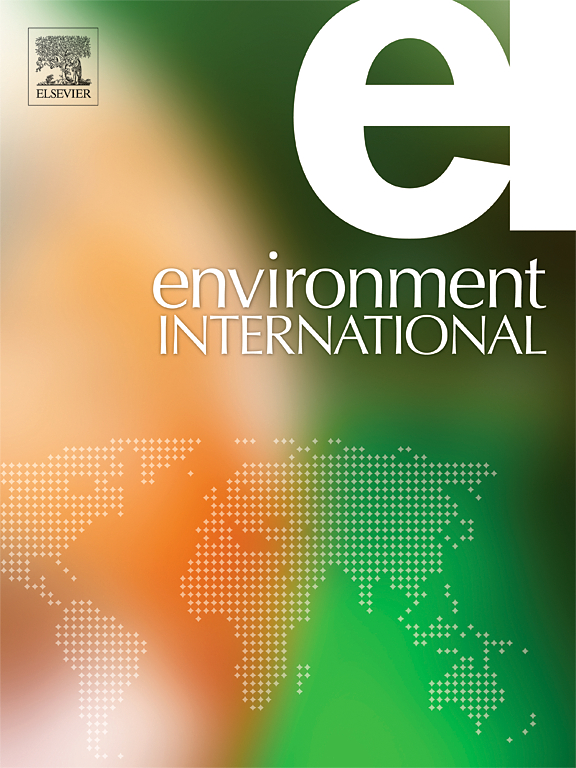Life in green: Associations between greenspace availability and mental health over the lifecourse – A 40-year prospective birth cohort study
IF 10.3
1区 环境科学与生态学
Q1 ENVIRONMENTAL SCIENCES
引用次数: 0
Abstract
Background
The beneficial impacts of greenspace availability on mental health are well-documented. However, longitudinal evidence using a spatial lifecourse perspective is rare, leaving the dynamics of how greenspace influences mental health across the lifecourse unclear. This study first uses prospective birth cohort data to examine the associations between greenspace availability in childhood (0–16 years) and mental health in adolescence (16 years) and between greenspace availability and mental health across adulthood (18–40 years).
Method
Data were obtained from the Christchurch Health and Development Study, comprised 1,265 cohort members born in Christchurch, New Zealand, in 1977. Mental health outcomes including depressive symptoms, anxiety disorders and suicidal ideation were assessed in adolescence (16 years), and in adulthood (18–40 years). Greenspace availability from birth to age 40 years was measured as the proportion of vegetated areas within circular buffers (radius from 100m to 3000m) around members’ geocoded residential addresses using a time-series impervious surfaces data from 1985 to 2015. Bayesian Relevant Lifecourse exposure models examined the associations between childhood greenspace availability and adolescent mental health and tested for critical/sensitive age periods. Generalised Estimating Equation logistic regression models assessed the associations between greenspace availability and mental health across adulthood. These analyses were adjusted for various important individual, family, and area-level covariates.
Results
No associations were found between childhood greenspace availability and any adolescent mental health conditions. However, in adulthood, a one standard deviation increase in greenspace availability within 1500m and 2000m buffers was associated with a 12% and 13% reduced risk of depressive symptoms, respectively, after adjusting for various covariates.
Discussion
This study supports the protective effects of greenspace on adult depressive symptoms, highlighting the significance of employing a spatial lifecourse epidemiology framework to examine the long-term effects of environmental factors on health over the lifecourse.
绿色生活:生命过程中绿色空间可用性与心理健康之间的关系——一项40年前瞻性出生队列研究
绿色空间对心理健康的有益影响是有据可查的。然而,使用空间生命历程视角的纵向证据很少,这使得绿色空间在整个生命历程中如何影响心理健康的动态不清楚。本研究首先使用前瞻性出生队列数据来检查童年(0-16 岁)绿地可用性与青春期(16 岁)心理健康之间的关系,以及成年期(18-40 岁)绿地可用性与心理健康之间的关系。数据来自克赖斯特彻奇健康与发展研究,包括1977年出生在新西兰克赖斯特彻奇的1265名队列成员。在青春期(16 岁)和成年期(18-40 岁)评估了包括抑郁症状、焦虑症和自杀意念在内的心理健康结果。利用1985年至2015年的时间序列不透水表面数据,以成员地理编码的居住地址周围圆形缓冲区(半径从100 米到3000 米)内植被面积的比例来测量从出生到40 岁的绿地可用性。贝叶斯相关生命历程暴露模型检验了儿童绿地可用性与青少年心理健康之间的关系,并对关键/敏感年龄段进行了测试。广义估计方程逻辑回归模型评估了绿色空间可用性与成年期心理健康之间的关系。这些分析对各种重要的个人、家庭和地区水平的协变量进行了调整。结果没有发现儿童绿地可用性与任何青少年心理健康状况之间的关联。然而,在成年期,在调整各种协变量后,在1500 m和2000 m缓冲区内增加一个标准偏差的绿地可用性分别与抑郁症状风险降低12% %和13% %相关。本研究支持绿色空间对成人抑郁症状的保护作用,强调了采用空间生命历程流行病学框架来研究环境因素在整个生命历程中对健康的长期影响的重要性。
本文章由计算机程序翻译,如有差异,请以英文原文为准。
求助全文
约1分钟内获得全文
求助全文
来源期刊

Environment International
环境科学-环境科学
CiteScore
21.90
自引率
3.40%
发文量
734
审稿时长
2.8 months
期刊介绍:
Environmental Health publishes manuscripts focusing on critical aspects of environmental and occupational medicine, including studies in toxicology and epidemiology, to illuminate the human health implications of exposure to environmental hazards. The journal adopts an open-access model and practices open peer review.
It caters to scientists and practitioners across all environmental science domains, directly or indirectly impacting human health and well-being. With a commitment to enhancing the prevention of environmentally-related health risks, Environmental Health serves as a public health journal for the community and scientists engaged in matters of public health significance concerning the environment.
 求助内容:
求助内容: 应助结果提醒方式:
应助结果提醒方式:


